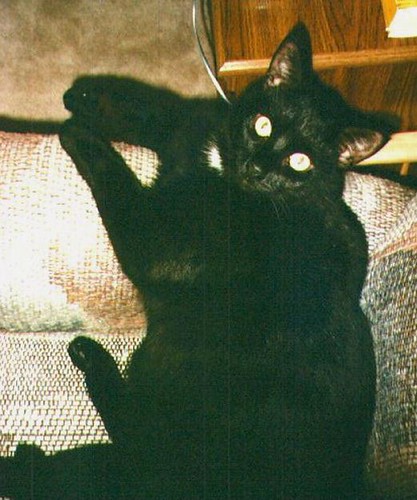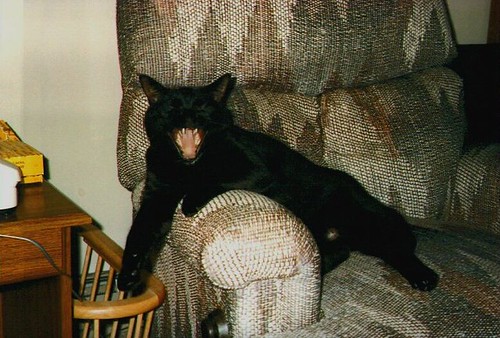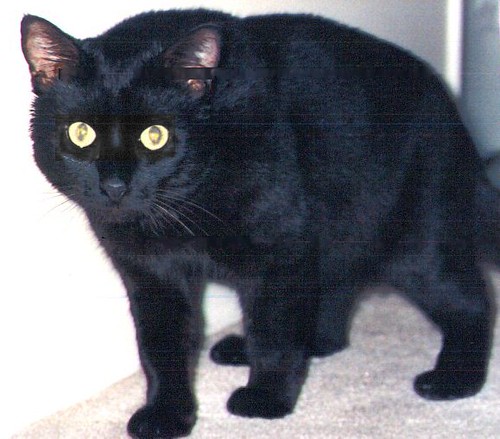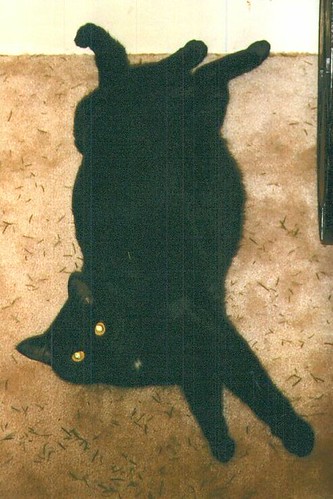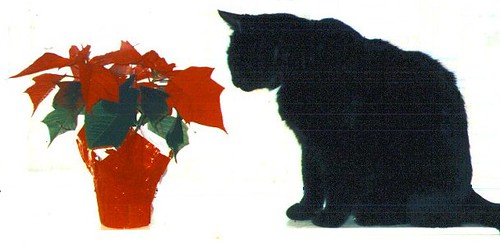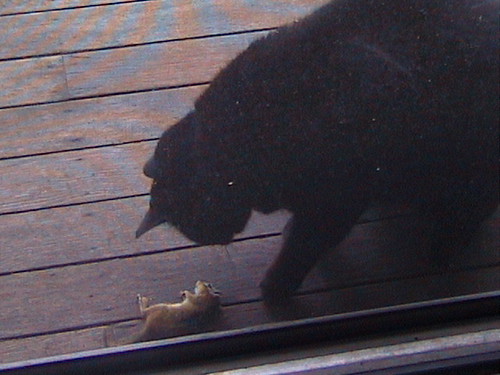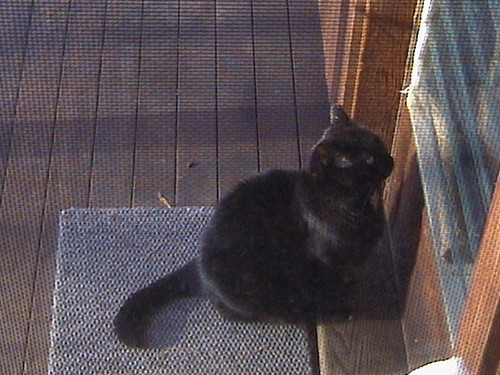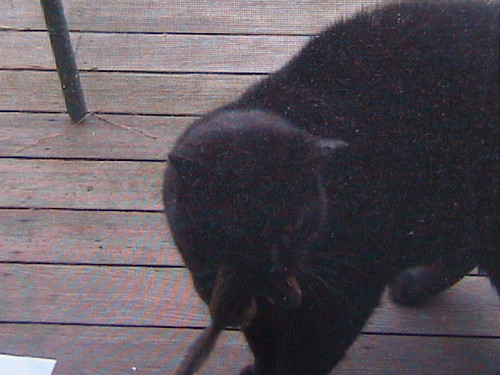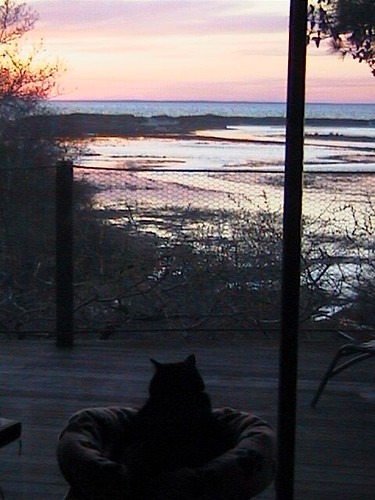
I thought I’d be able to handle "IT". My reasoning was that the passing of 18 autumns would surely have dampened the pain. Then there was that certain ground ball stabbed by Keith Foulke and underhanded to Doug Mientkiewicz last October: The proverbial wing tip crushing the cigarette, extinguishing the embers of agony.
So at 6:00 pm yesterday evening, as another wave of snow fell outside (53 inches and counting this month, for those scoring at home...), I got a fire going and settled in with some meatloaf and a 4-pack of Boddingtons to watch "IT" again. If you’re a Red Sox fan who’s old enough to qualify for a Taurus rental at Hertz, then “IT” can only mean one thing. “IT” remains the ultimate close-but-no- cigar game, the one in which absolute elation evaporated without a trace in the span of exactly one minute, 57 seconds. “IT” made instant legends of Gary Carter, Ray Knight and Mookie Wilson while rendering the likes of Calvin Schiraldi, Bob Stanley, Rich Gedman, John McNamara, and William Joseph Buckner as perpetual goats.
“IT”, of course, was Game 6 of the 1986 World Series, which aired as part of NESN’s World Series Winter. The broadcasts have been going on for nearly a month now, and February will feature the magical 2004 postseason, including a much happier ending. Earlier this month the classic ’75 Series was shown, and I was able to endure the final inning of Game 7 with my chin up. Even as Joe Morgan’s blooper landed softly in short center field, and again as Yaz flew out to Cesar Geronimo, I was able to hold my head high. After all, those ’75 Sox had overachieved against the vaunted Big Red Machine. Losing hurt, but it didn’t dim the glow of that special season.
I figured this game wouldn’t be much different. The 1986 season had offered its own kind of magic, with Roger Clemens, Wade Boggs and Dave Henderson coming up huge. There were grizzled vets like Tom Seaver and Don Baylor alongside energetic tikes such as Mike Greenwell and Spike Owen. Great moments like Seaver’s complete game 5-hitter in August, Roger’s 20 whiffs vs the Mariners, and Hendu’s pennant-winning shot off the late Donnie Moore. Not to mention an enigmatic yet entertaining pitcher named Oil Can.
It was in the midst of my senior year at UMass, and the fall semester found me in a killer apartment with three buddies in South Amherst. Lots of great nights at Time Out and The Pub, and plenty of parties at Smith College. And to top it off, on Saturday the 25th night of October, the Boston Red Sox were about to win baseball’s World Championship.
As “IT” turned out, they didn’t. The collapse was brutal, far worse than Torrez grooving a slow burner to Bucky Dent in ’78, or Aparicio’s slip while rounding 3rd in ’72. The ending obliterated much of what I’d hoped to remember about that night, and most of what remains is the bleakness. In an episode of the long-running television series M*A*S*H, Pierce was unable to save one of his best friends on the operating table. Before going under from the anesthesia, his pal whispered to him, "I never heard the bullet..."
Red Sox fans never heard it either.
“IT” was supposed to have been a slam dunk. Clemens, looking spry and strong, was starting on five days’ rest. When pitching with a similar layoff between starts in the regular season, he'd gone 9-0. At the plate, Boggs had been placing the ball anywhere he pleased for most of the season, usually out of the opposition’s reach. Dwight Evans had found his groove, and the Sox were playing tremendous defense at nearly every position.
Meanwhile, the Mets were trotting out junkballer and former Sox pitcher Bobby Ojeda. His changeup and curve could be effective, but his fastball was very hittable. And it didn’t seem possible that their lineup, which featured Wilson, Rafael Santana, and Ojeda in the 7-8-9 holes, would have any chance whatsoever against the high-90’s heat of Clemens.
How could they beat us? HOW???
My roommates – Rude, JB, and Pud – shared my optimism. Though less of a baseball fan than the rest of us, Rude nonetheless was pumped. JB, who’d grown up with Rude in the Boston suburb of Randolph, was more rabid. But the x-factor was Pud, the ultimate cynic from Fairhaven who wore his southeastern Massachusetts accent as a defiant badge of honor. He was the first person I’d ever met who knew more about baseball than me – volumes more, in fact. When it came to the elements of the game, Pud was always right. Even If everything seemed to be going well, Pud always could – and always would -- tell us what why it wasn’t. But I couldn’t recall having seen him as confident as he was on this night. The celebration was imminent, and the fridge was stocked with enough Budweiser longnecks to prove it.
We should have known something was awry in the top of the first when, following Boggs' infield hit, the game was interrupted by a skydiver named Mike Sergio. In 1975, he’d taken the only photos of Owen Quinn making the world’s first known base jump – from the top of unfinished Tower #1 at the World Trade Center. On this night it was Sergio himself who drifted onto the infield while Buckner was at the plate. But the oddity was quickly forgotten as Evans laced a double off the wall in left-center, missing a homer by four feet and putting the Sox on the board. What none of us knew at the time was that Sergio had placed a hex on Buckner which wouldn’t become apparent until the late innings.
As Calvin Schiraldi came on to pitch the last of the eighth with the Sox guarding a 3-2 lead, my buddies and I had no earthly idea that the tension and stakes would make him fold like a road map. Perhaps we were too busy reveling in the glory of Clemens' brilliance over seven solid innings, including four innings of no-hit ball to open the game. But it's more likely that Schiraldi's prior performance had given no reason to doubt his pedigree. Despite his youth, he'd been overpowering in his first season with the Sox, with 55 strikeouts and only 36 hits and 15 walks in 50 innings of work. Opposing batters had hit just .197 against him as he logged a 1.41 ERA. A former Met, he’d joined his ex-University of Texas teammates Owen and Clemens in Boston, and now here he was facing his old team needing six more outs to close out the Series.
Almost from the outset, Calvin struggled with control and consistency. He seemed tentative and unwilling or unable to go for the throat. His indecisiveness led to a throwing error on a routine bunt by Lenny Dykstra left runners at 1st and 2nd with nobody out. Following another sacrifice, he was forced to walk Keith Hernandez to load the bases. Gary Carter then sat back as three straight offerings from the six-foot, four-inch Texan were nowhere near the plate. With a 3-0 count, Carter lined out to Rice in left field, plenty deep to score Lee Mazzilli with the tying run.
It was during this at-bat by Carter that, 18 annums later, I began to feel those same familiar pangs of doubt. My nerves were unsettled and, needing another drink, I popped open another pub draught can and eased the golden liquid along the slope of the tilted pint glass. But if waiting for the head to settle out seemed an epoch, then the suspense of watching Darryl Strawberry’s sky-high fly ball to center finally land in Henderson’s glove was an eternity.
After a scoreless and threatless ninth for both sides, the game moved to extra innings. Looking back, I recall how Pud was livid that Schiraldi had cost Clemens the chance to be the winning pitcher in the clinching game. But he was still outwardly brimming with confidence in the outcome as the Sox batted in the 10th. Dave Henderson was due to lead off, and NBC’s producers spared no moment in making sure the clip of his mammoth Game 5 home run was shown in full. There he was in Anaheim, silencing the crowd, launching himself out of the batter’s box after contact (much like Sammy Sosa would a dozen years later) and bringing the Sox back from the dead when they were one strike away from elimination.
With Rick Aguilera now on to pitch for New York, Henderson stepped in and took a huge rip, whiffing on an opening fastball. Aguilera then tried to slip a slider in on the wrists, but he left it low and over the plate and Henderson took another mighty cut, pulling the ball hard down the left field line. Once again we saw him launch, then twist, then backpedal down the first base line as he willed the ball fair. As it landed in left field seats, he broke into his characteristic home run trot -- arms tensed at the elbows yet hanging nearly straight along his sides, with his hands flard out below his hips. Hendu was the hero once again.
My thoughts now drifted back to Amherst, where a well-oiled Pud had jumped up from the couch and opened the front door. “The fackin’ Mets suck!!!” he yelled at peak volume and within earshot of the few dozen New Yorkers who resided at Southwood Apartments and Brittany Manor. Then, laughing, he slammed the door and started looking for the phone. “I gotta call my fatha” he kept repeating. We finally talked some sense into him, convincing him to hold off.
Meanwhile Owen and Schiraldi had just whiffed, and Boggs laced a double to the alley in left-center. Barrett knocked him in with a solid base hit up the middle, making it a 2-run game. When Buckner was ht by a pitch on his right hip bone, we wondered if we’d see a pinch runner. Buck had been fighting chronic pain in his ankles and knees most of the season. He'd played a full nine innings in the field this night, and it seemed like a perfect time to get some fresh legs in the person of Dave Stapleton. As Jim Rice strode to the plate, we were somewhat puzzled to see no other activity in the Sox dugout, but we just shrugged it off. Even after Rice lined out to end the inning, we were feeling no pain. After all, we were up 5-3, and victory was inevitable.
Pud had cracked open another beer and had begun rifling through my LP record collection. This is a guy who, with the exception of college football fight songs and a few Springsteen tunes, hated music. But there he was, thumbing his fingers through the N’s, O’s and P’s. I knew what he was looking for, but he was still having trouble pinning it down.
“Hey Brownie!! What the hell album is ‘We Are The Champions’ on??” he slurred.
“Queen – News of the World,” I replied. Within a few moments he’d located it and as I watched him fumble around trying to get the black disk out of its sleeve, I decided not to entrust my brother’s Technics turntable to Pud’s less-than-gentle hands. I placed the record on the rotating platen, set the speed to 33 RPM, and cued the stylus over the proper track for him. Now all he had to do was lower the tone arm lever and the celebration would commence. But first, all the Sox needed were three more outs.
The bottom of the 10thstarted harmlessly enough, with the fans at Shea Stadium clanking cowbells, and the organist climbing the scales with the “Hut-2-3-4-Charge!” chant. Before we knew it, there were two out as both Backman and Hernandez lofted easy fly balls to the outfield.
“This is it!!! THIS IS IT!!” Pud begain yelling to nobody in particular. “Sixty-Eight Fackin’ Yeahs!!” None of us could sit, and outside we heard more loud yelling, girls screaming, and firecrackers going off. Pud opened the door and returned the shouts, with more derisive comments directed towards the local Mets fans.
NBC then flashed a graphic proclaiming Marty Barrett, who’d reached base in all five trips to the plate, as the Player of the Game. Hard to argue, though a case could have been made for Clemens' seven brilliant innings in spite of a heavy workload. In the background, the recorded trumpet charge was blaring from the PA speakers, and Kevin Mitchell was coming up to hit for Aguilera. There were no hints whatsoever that at that very moment we were witnessing the beginning of the end, and that within 13 minutes and 17 seconds our emotional states, and those of all Sox fans, would be abruptly and cruelly altered.
Eighteen years later, I now have my answer. I knew what was coming, and I couldn’t watch. Even with a World Series trophy now residing on Yawkey Way, I still had to mute the audio, look away, and, ultimately, change the channel. The wounds, I’m afraid, are still fresh after all.
That one minute, 57 second span I noted earlier? That's how much time elapsed between the instant that Stanley's pitch deflected off Gedman's mitt (scoring Mitchell), and Ray Knight's planting of both feet on home plate (following a grounder to first). There’s really no point in detailing what transpired in Amherst from that point forward., but suffice to say there was a can of Chef Boy-Ar-Dee Beef Ravioli embedded in the drywall to the right of our TV. Our apartment then fell silent while outside the walls those sporadic groups of Mets fans were celebrating with jovial glee. On campus that night, dozens of arrests and several injuries followed skirmishes between fans of both teams.
Me? I sulked over to the turntable, secured the tone arm on its rest, and removed the LP from the platform. Then, holding it with a thumb on the label and my ring finger on the edge, I guided it slowly into the protective paper jacket. Finally, I slid the record back into the cardboard sleeve, and returned it to its proper alphabetic location on the bottom shelf of my bookcase.
That album hasn’t been played since.

